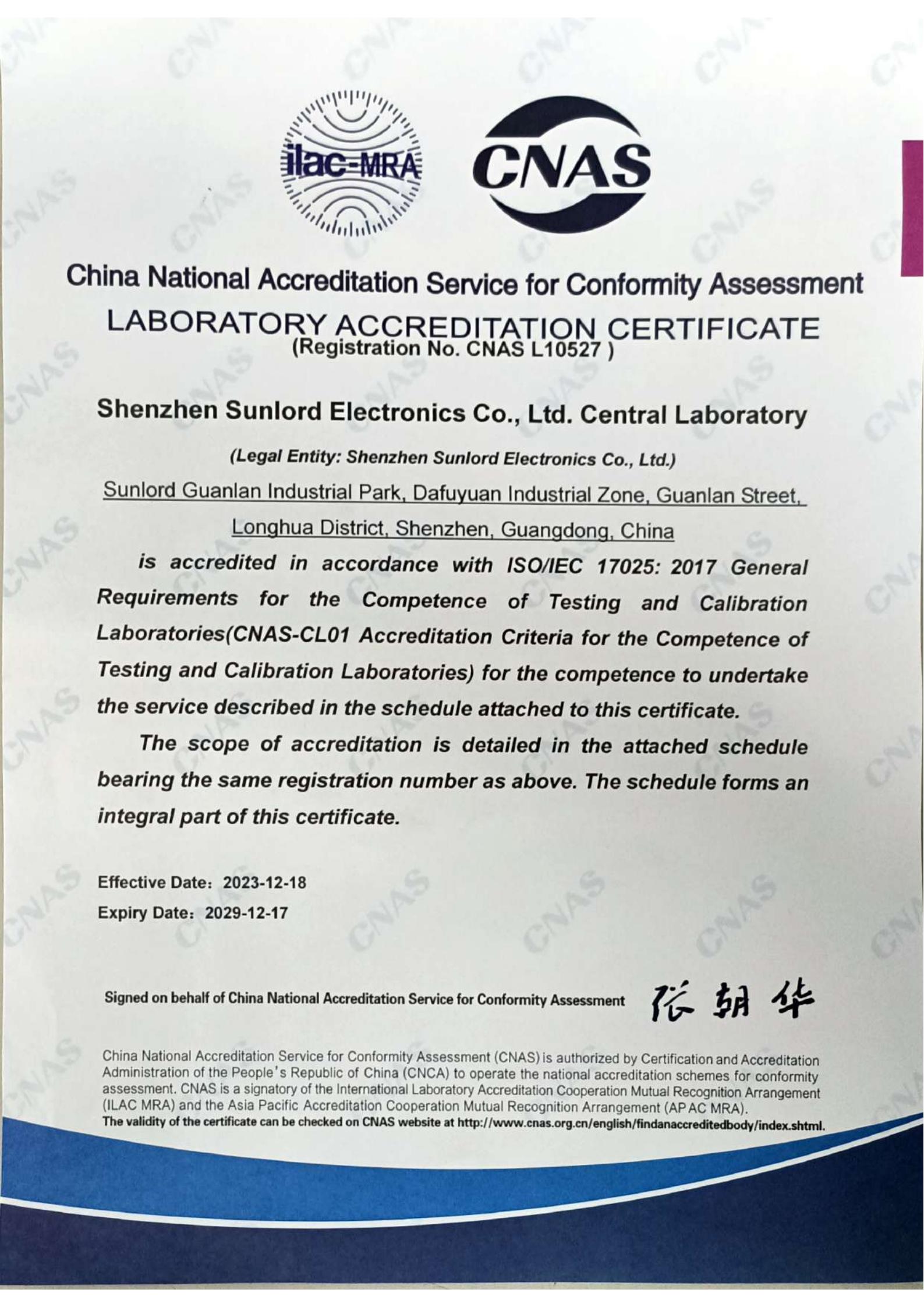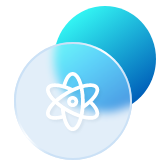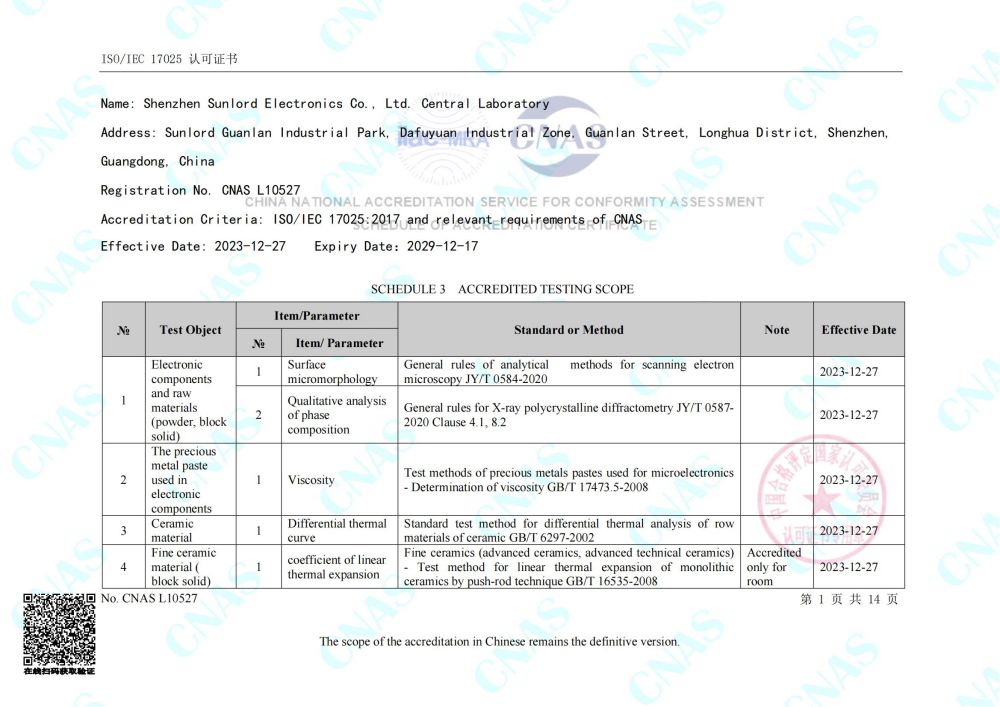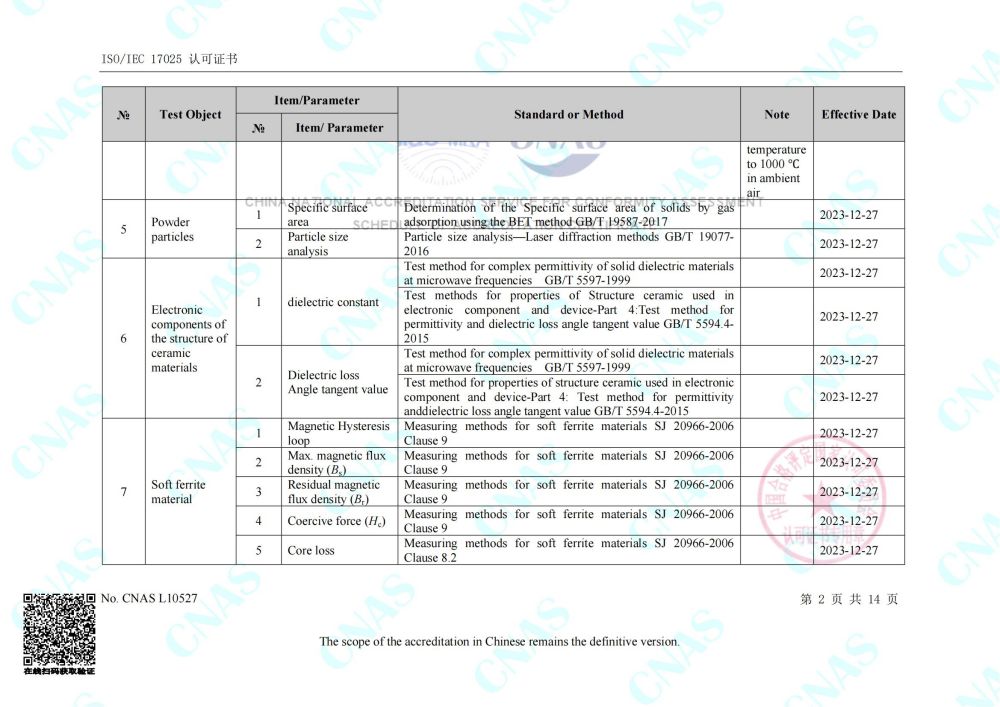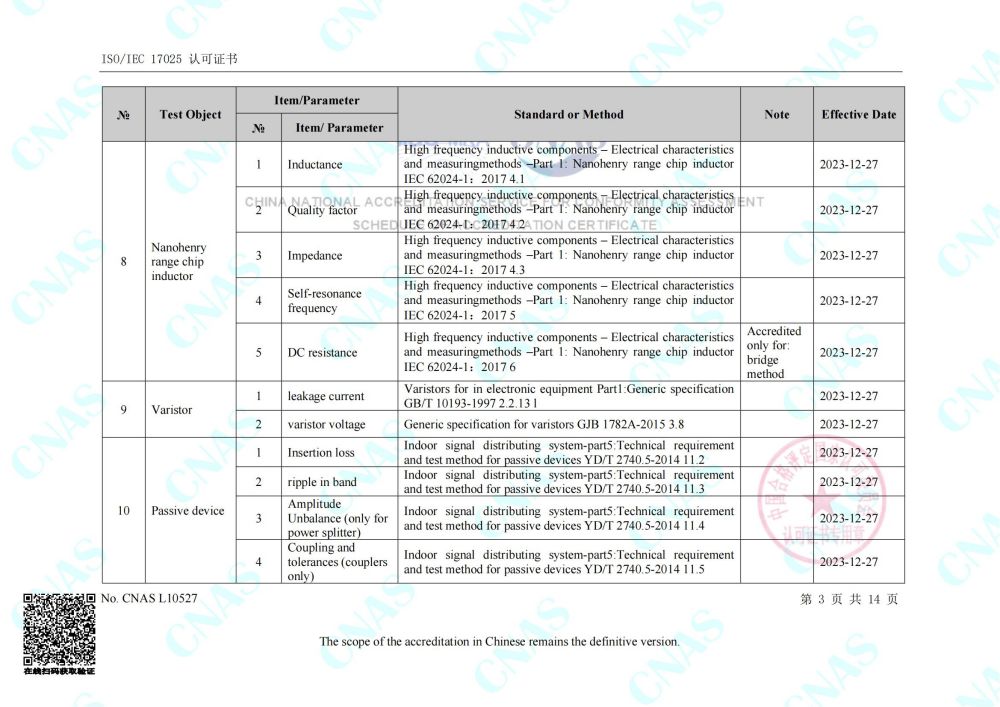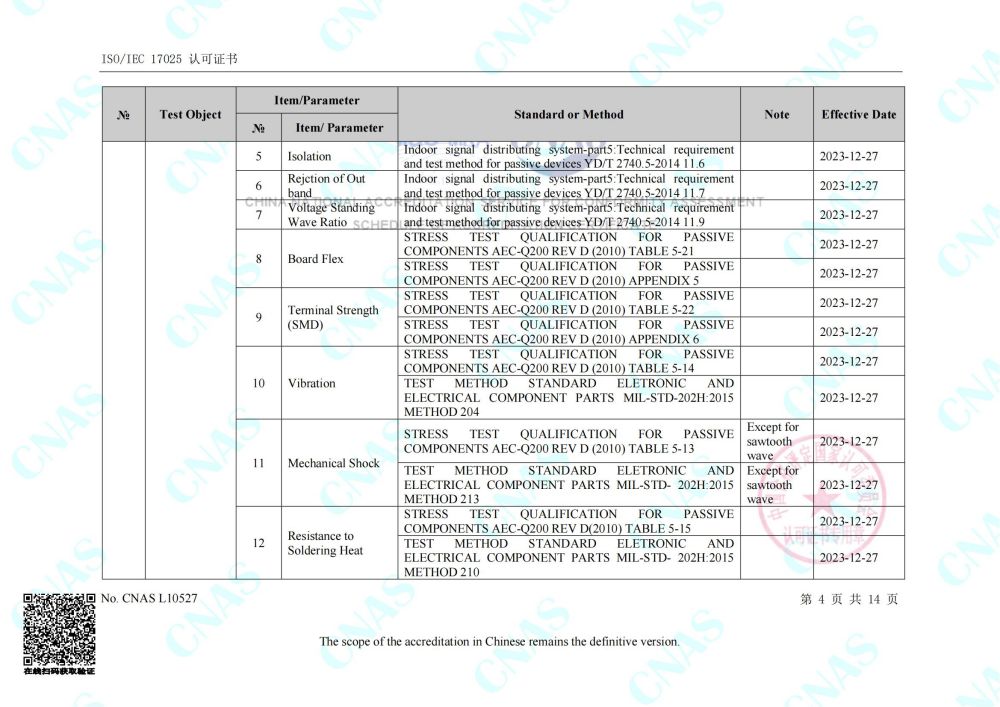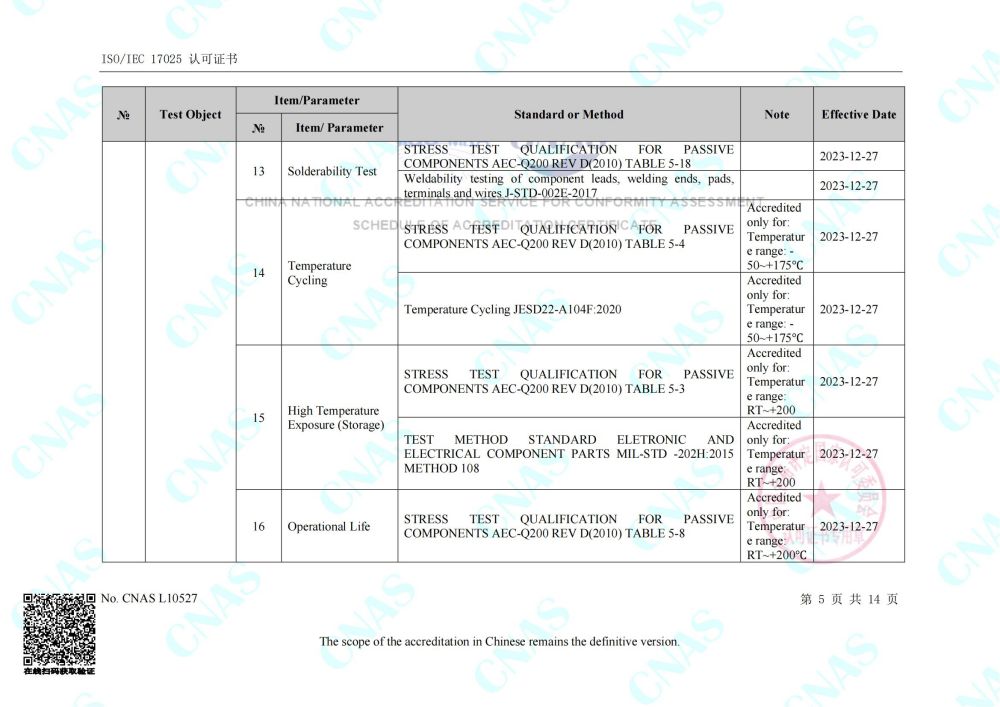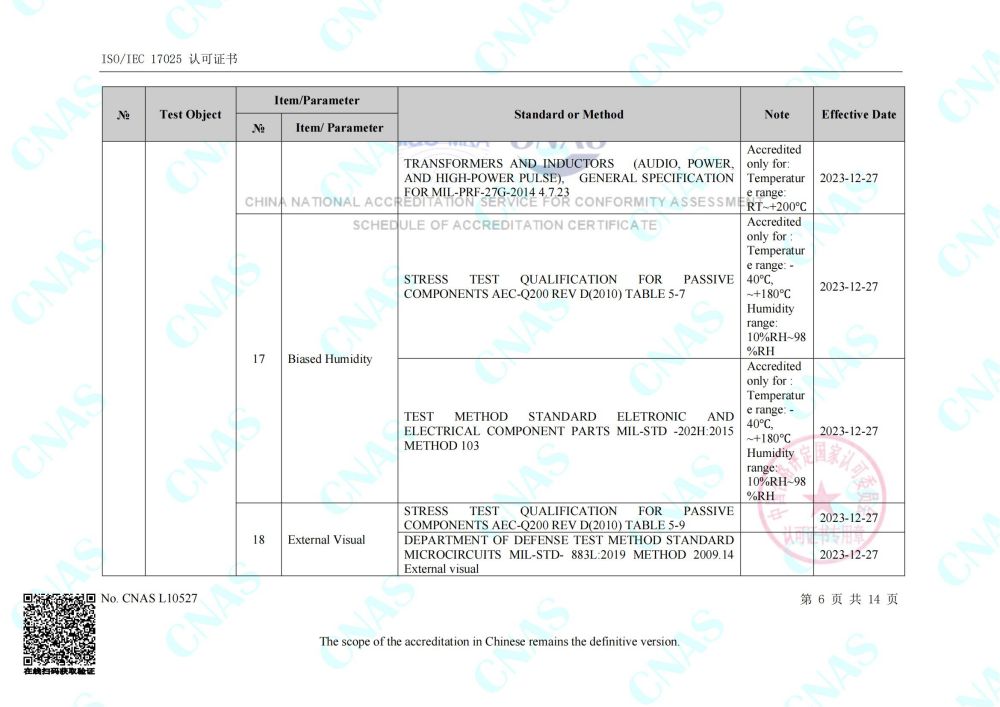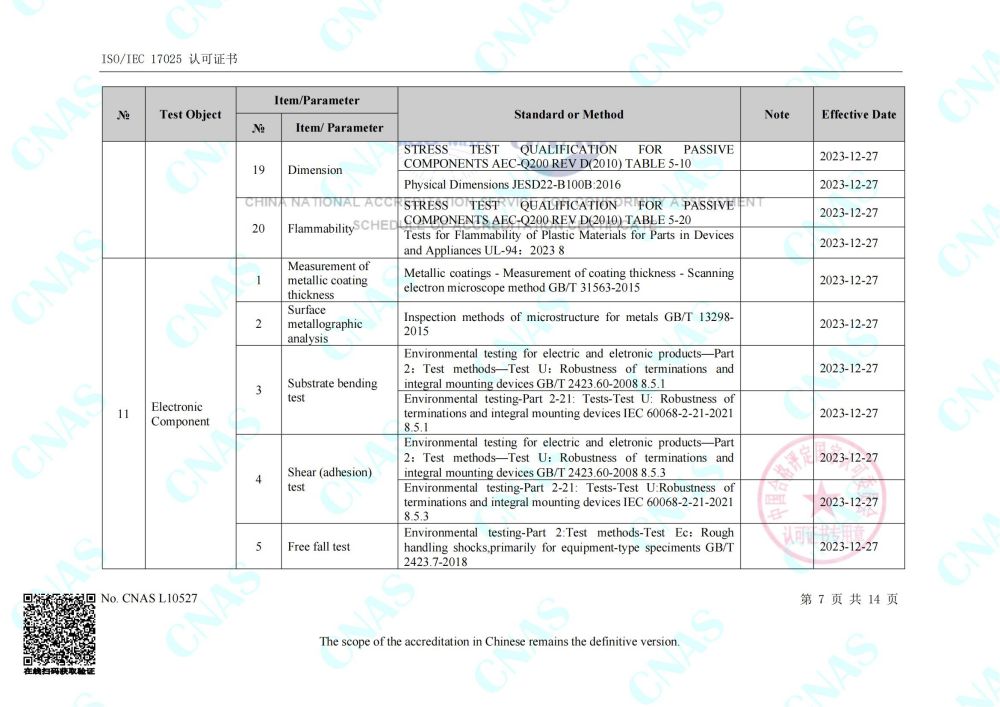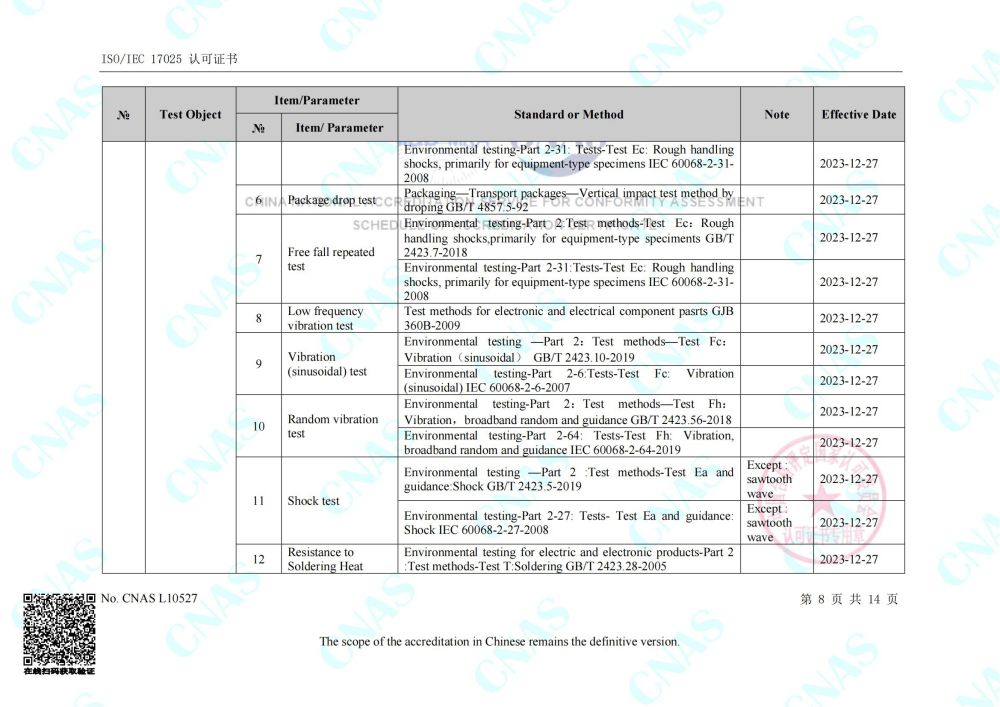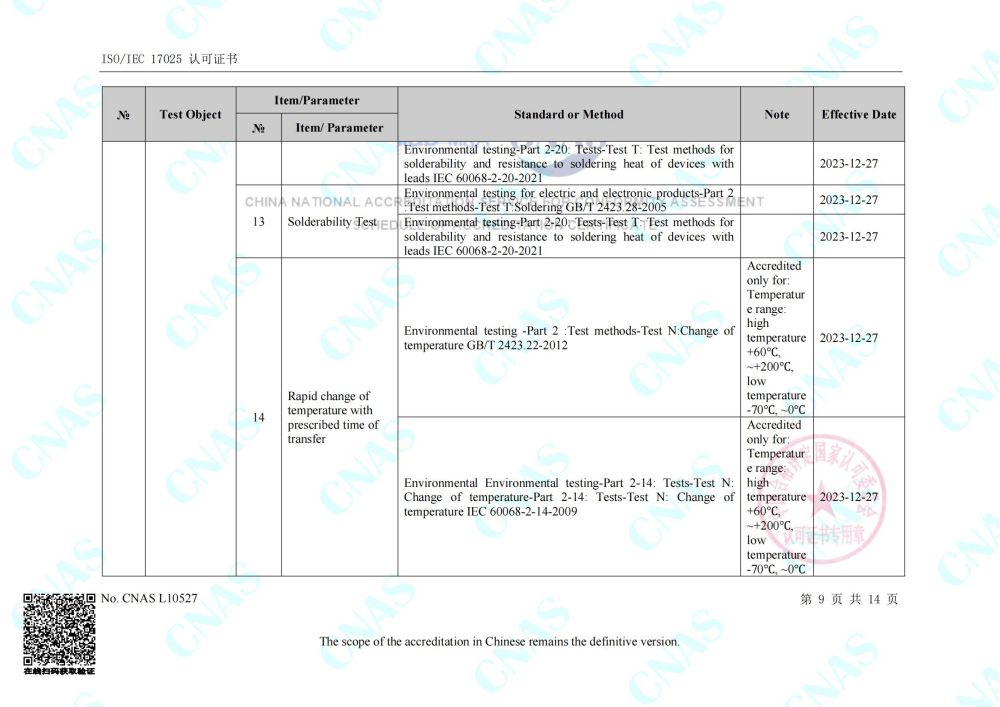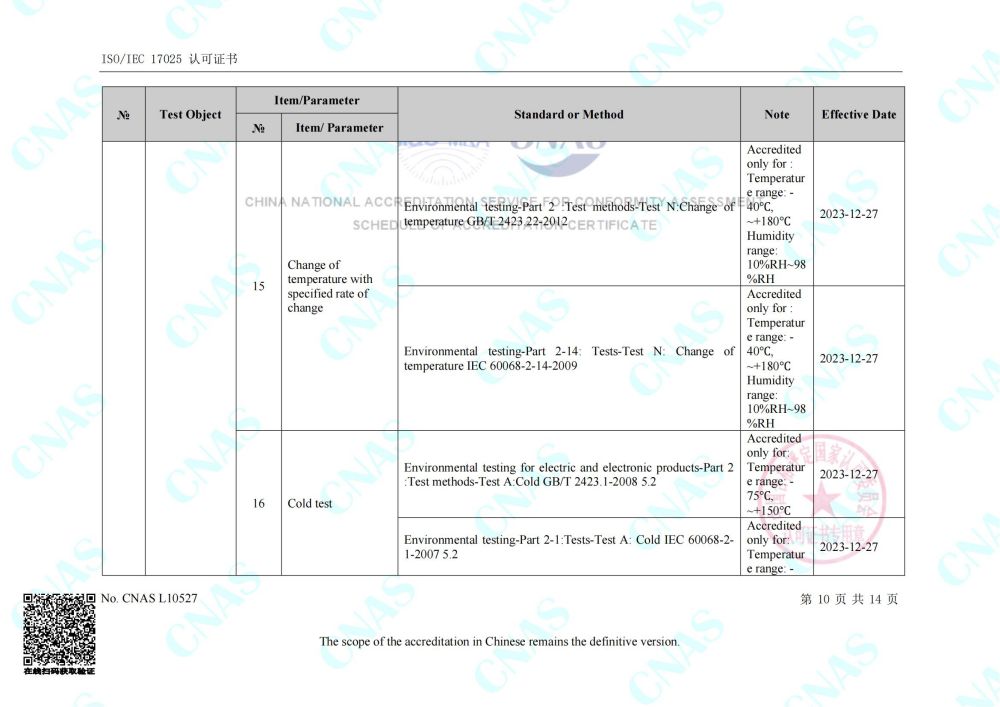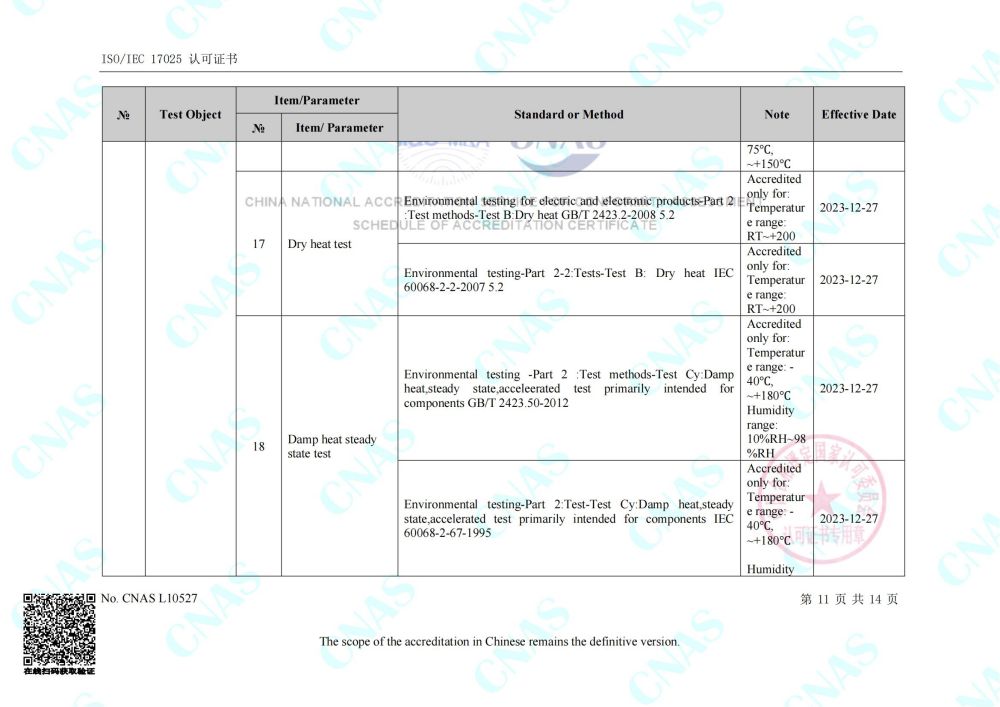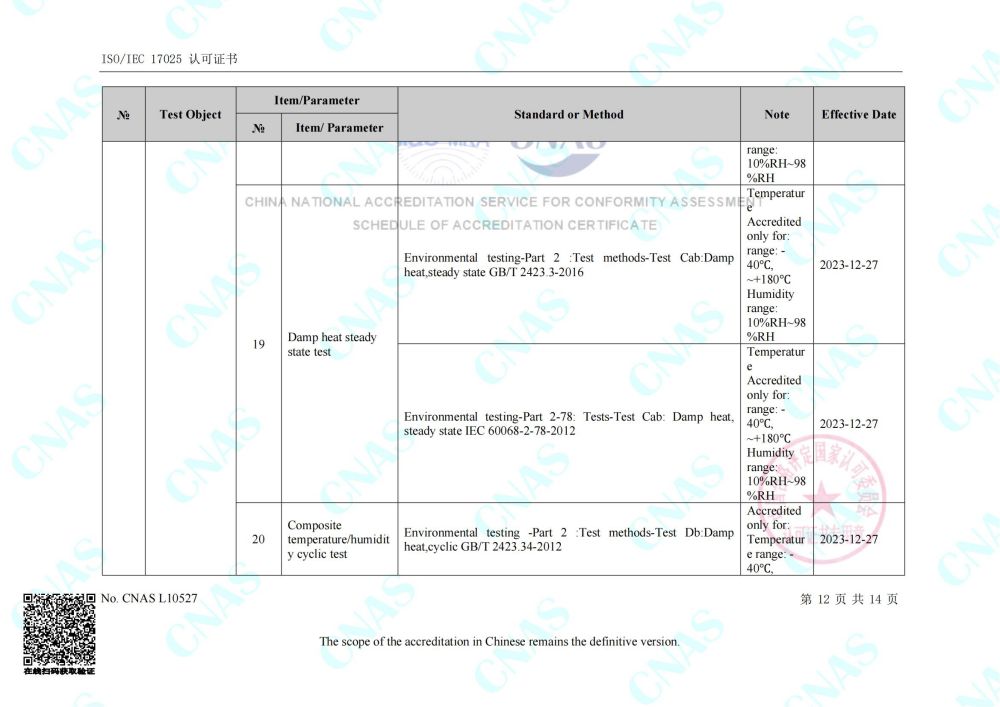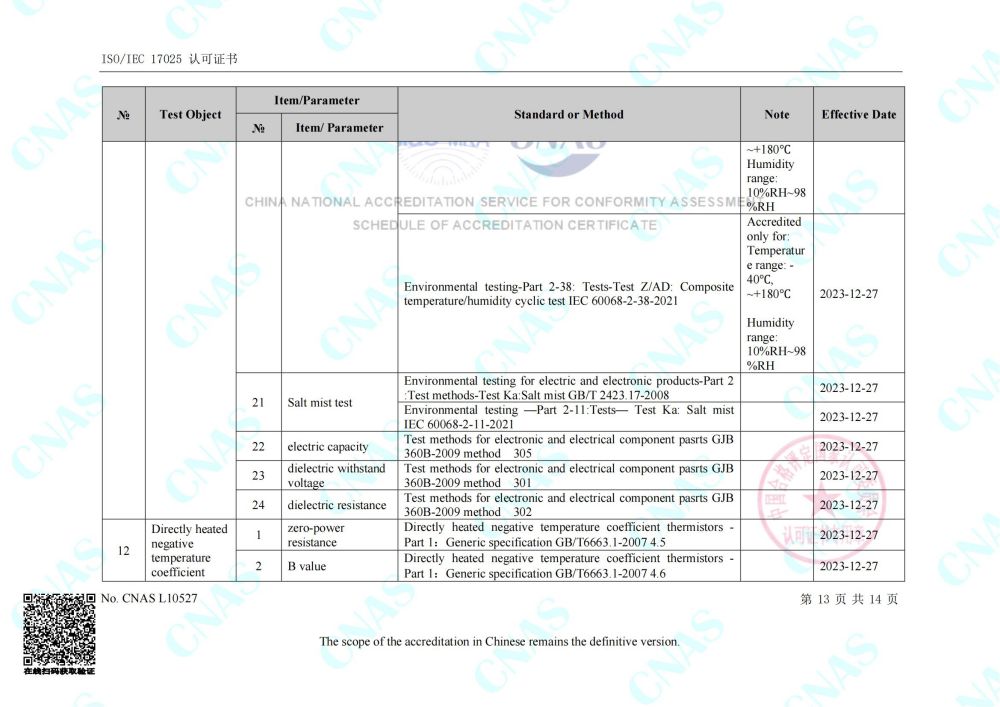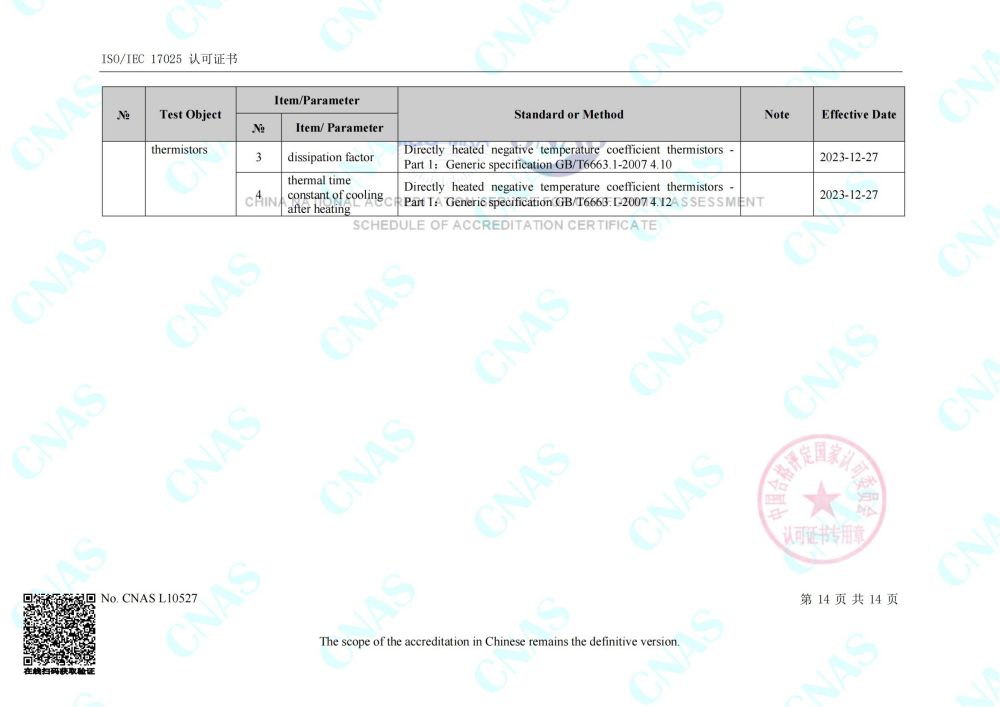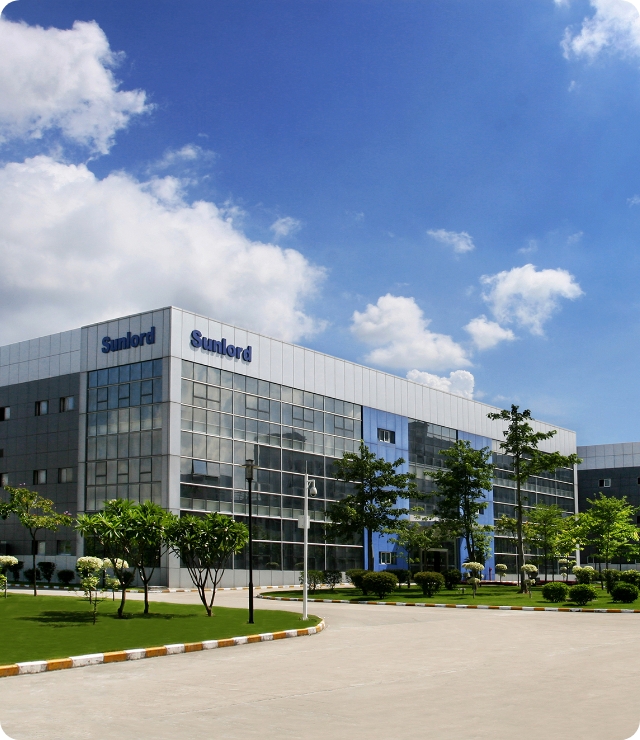

The Physical and Chemical Lab
Electrical Research Lab
Reliability Test Lab
Simulation Lab
| No. | Category | Equipment | Key parameters | Test items |
|---|---|---|---|---|
| 1 | Microscopic surface observation | Integrated scanning electron microscope and energy spectrometer machine | Scanning electron microscopy magnification:6X~1,000,000X; Resolution of energy spectrum analyzer:133eV@MnKɑ.100KCPS; Range of energy spectrum analysis:B5~U92 |
Micro area morphology analysis, composition analysis, and micro area size measurement |
| 2 | Material characteristic analysis | High speed automated specific surface area and porosity analyzer | Display Accuracy:0.1%; Measurement range:孔径:2nm~200nm,specific surface:0.1~3500㎡/g; Measurement repeatability accuracy:≤±3% |
Single/multi-point specific surface area testing, material adsorption desorption isotherms, BJH pore volume distribution/total pore volume/average pore radius |
| 3 | X-ray fluorescence analyzer | Scope of qualitative analysis of elements:Al13 ~ U92,Controllable RoHS six harmful elements and EN71 eight heavy metal elements;Lower limit of quantification: several ppm to tens of ppm; Analysis time: a few minutes | RoHS testing and eight major heavy metal testing for toys | |
| 4 | X-ray diffractometer | Measurement range: 2.5°~160°; Angle accuracy: 0.002° | Crystal structure, crystallinity, grain density analysis, phase identification and quantitative analysis | |
| 5 | cone-and-plate rheometer | Torque range: 5~50mNm; Speed range: 0.1~1000RPM; | "Qualitative determination of fluid type; Viscosity, yield point testing, and torque variation analysis;False plasticity, thixotropy, and creep testing" | |
| 6 | Thermal expansion analyzer | Temperature range: room temperature~1600 ℃; Test range: ± 5mm; Accuracy: 1%; Heating rate: 0-50K/min |
Research on linear expansion and contraction process, determination of expansion coefficient, glass transition temperature, softening point testing; Research on phase transition process and reaction kinetics | |
| 7 | STA | Temperature range: room temperature~1500 ℃, heating rate: 0~± 99.9 ℃/min or ℃/hour, Test range: DTA: ± 1~± 1000 μ V; TG: ± 500mg, Accuracy: Temperature: ± 1.0 ℃; Weighing: ± 1.0% |
Study the thermal stability, phase transition, chemical reaction process, melting point determination, adsorption/desorption process, and qualitative analysis of samples. | |
| 8 | Multiple light scattering instrument | Particle size measurement diameter range: 10nm~1000 μM Scanning interval resolution: 5 μM Scanning speed: 15mm/s Number of detectors: 2 Light source wavelength: 880nm ± 20nm Measurement temperature range: 4 ℃~80 ℃ Number of samples to accommodate: 6 Sample tube volume: 20mL |
Particle size testing of slurry or powder, characterization of slurry dispersion, and characterization of slurry stability | |
| 9 | Moisture analyzer | Measurement range: 10 μ G~100mg H2O Titration rate: maximum 2.5mg/min |
Moisture content test | |
| 10 | Failure analysis | X-ray testing machine | Feature resolution:<1µm; Geometric magnification: maximum 2000X; Overall magnification: maximum 10000X |
X-ray fluoroscopy analysis/CT tomography analysis |
| 11 | Fully automatic disc grinding machine | Turning speed: 50-150 rpm, adjustable; Rotation direction: clockwise, counterclockwise. Rotating speed of the turntable is 40-600rpm; Rotation direction: counterclockwise. Polishing 54 dBA, grinding 56 Dba |
Slice analysis | |
| 12 | Ultrasonic scanning microscope | "Scanning modes: A-Scan (point scan), B-Scan (cross-sectional scan), C-Scan (layer scan), Q-BAM (multi-layer cross-sectional scan), Tray Scan (tray scan), multi-layer C-scan Scanning range: 510 x 510 mm Scanning speed: 0~1000 mm/s Scanning frequency: 15 MHz, 30 MHz, 75 MHz, 120 MHz Scanning resolution: The scanning resolution in the X/Y direction is ± 0.1 µ m, and the defect sensitivity in the Z direction can reach ± 5nm. Minimum threshold time: 1 ns" |
Non destructive testing analysis of internal cracks, holes, delamination and other defects in devices or raw materials | |
| 13 | Thermal emission microscope | Detection wavelength range: 7-14um Detector resolution: 640 * 480 Lens resolution: 5-180 μM Temperature control: 20-80 ℃ Maximum input voltage: 200V Maximum input current: 1.5A Data output modes: transient phase-locked diagram, peak amplitude diagram, peak phase diagram, valley amplitude diagram, valley phase diagram, voltage/current monitoring, IV curve testing, Lock In phase-locked analysis |
Hotspot analysis, searching for internal short circuit points in devices | |
| 14 | Ion grinding and polishing machine | Acceleration voltage: 1-10kV Test temperature range: -80 ℃ - room temperature Mode selection: Flat grinding/Section cutting Plane grinding angle range: 0-10 ° |
Ion grinding polishing |
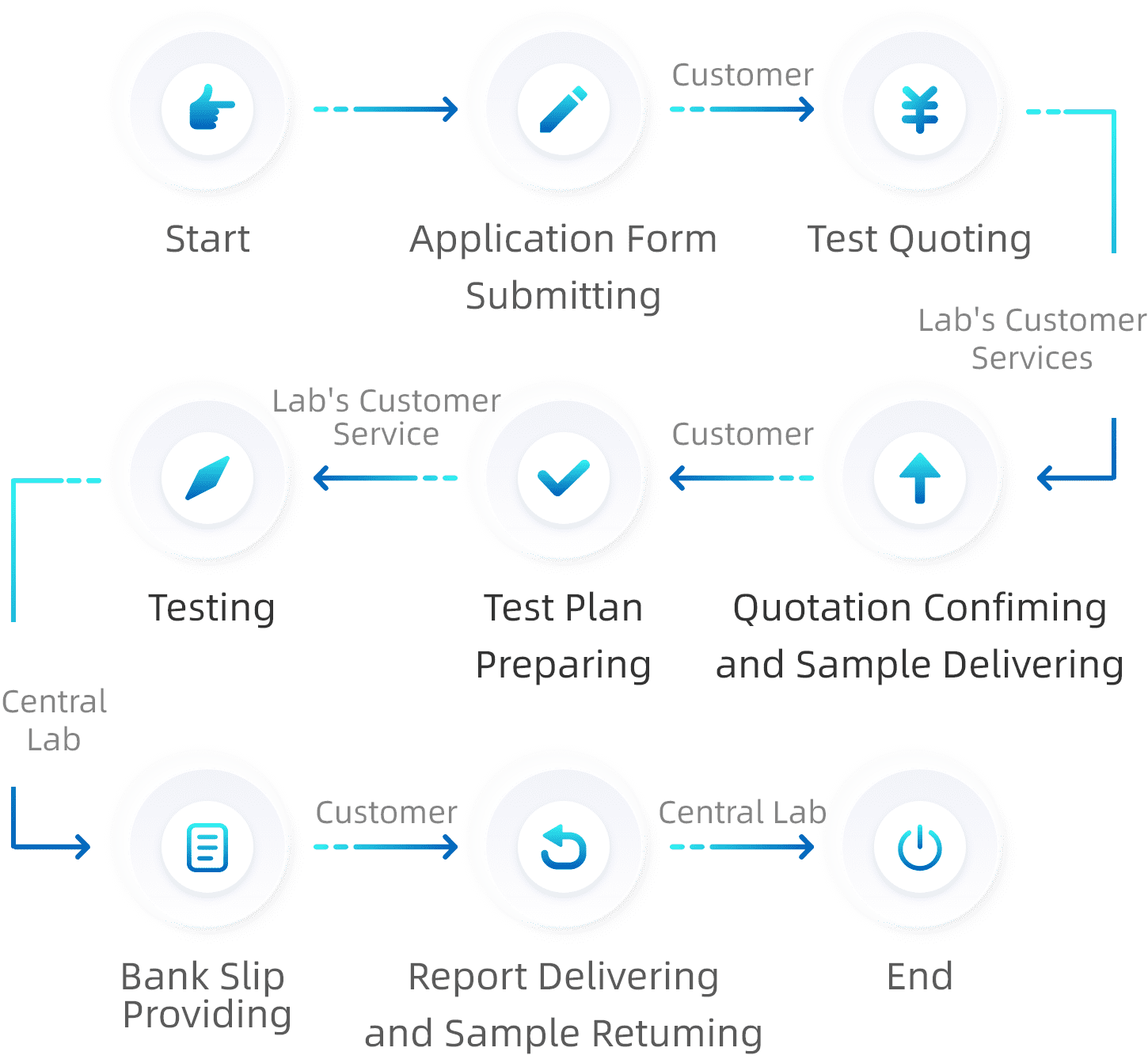
 Start
Start

 Application Form
Application Form Submitting
 Customer
Customer
 Test Quoting
Test Quoting
 Lab's Customer
Lab's CustomerServices
 Quotation Confiming
Quotation Confimingand Sample
DeliveringN
 Customer
Customer
 Test Plan
Test Plan Preparing
 Lab's Customer
Lab's Customer Service
 Testing
Testing
 Central Lab
Central Lab
 Bank Slip
Bank Slip Providing
 Customer
Customer
 Report Delivering
Report Delivering and Sample
Retuming
 Lab's Customer
Lab's Customer Services
 End
End
CNAS Accreditation Test Items List

Laborartoy Accreditation Certificate
